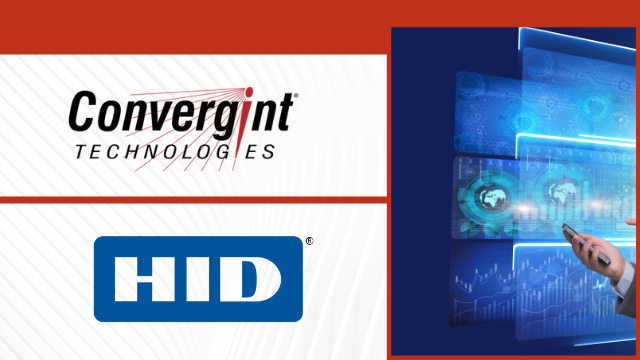As employers consider a return to the physical workplace, they must adapt to new requirements, implement new procedures, and leverage technology to alleviate their employees’ concerns related to public health in response to COVID-19.
Access control plays a critical role in creating a safe back-to-work strategy. With the help of Convergint and HID, organizations can leverage touchless physical access technologies, including mobile credentials along with Bluetooth solutions, to provide employers with an experience that supports a healthy and safe work environment.
Touchless Access Control Solutions
Various forms of touchless access control can help to reduce viral spread at human-to-object touchpoints. By reducing contact between humans and the objects related to access control, security can help to minimize potential cross-contamination.
Automatic door operators, revolving doors, and sliding doors all can help to reduce contact at high-volume entry and exit points. These can be coupled with touchless credentials and readers to ensure security while minimizing surface contamination.
Bluetooth Low Energy
Another strategy involves the use of long-range capable readers that leverage Bluetooth Low Energy (BLE) connections to deliver read performance at a distance. With a read range of up to five meters, BLE can further distance employees who might otherwise crowd up around readers and keypads.
Mobile Credentialing
Mobile access likewise reduces the need for employees to physically touch cards and communal readers. “The phone is something that belongs solely to the individual. If you only have to touch your own mobile device, then you’re pretty safe. You don’t need to touch anything else,” said Henrik Hjelte, HID solution manager, mobile access.
Organizations that rely on keypads or two-factor authentication may find mobile credentials and mobile capable readers to be a more hygienic alternative. The user unlocks the phone, then uses the phone to unlock the door, thus delivering two-factor security without the need to touch a shared keypad.
In the same way, mobile also allows for a biometric layer to be added to the access experience. “You can configure the mobile credential to only work when the device is unlocked, thereby requiring the owner to authenticate using their enrolled biometric, whether fingerprint or facial recognition,” Hjelte said. “That mitiates the risk of a lost, stolen, or shared mobile device from being used. And by leveraging the technology on the mobile device instead of at the door, you’re only touching your own device, and not a touchpoint that is shared with every other occupant.”
Touchless credentials, including mobile-based, shouldn’t be limited to opening doors. Organizations may also find that touchless credentials support more hygienic protocols for logging in to networks for vending, or activating printing.
Maintaining Compliance
In order to reduce contact at shared surfaces, these technologies need to be implemented in tandem with clear policies and supporting signage. Access control points need to be kept clean and sanitary, and special protocols may be required for keeping these areas hygienic when employees shift their schedules. Security also can issue specific access control rules and protocols for visitors, both at the point of entry and on site.
For more information on how HID’s touchless access control solutions can be implemented to help your organization maintain compliance with safety mandates related to COVID-19, contact a Convergint access control expert today.







